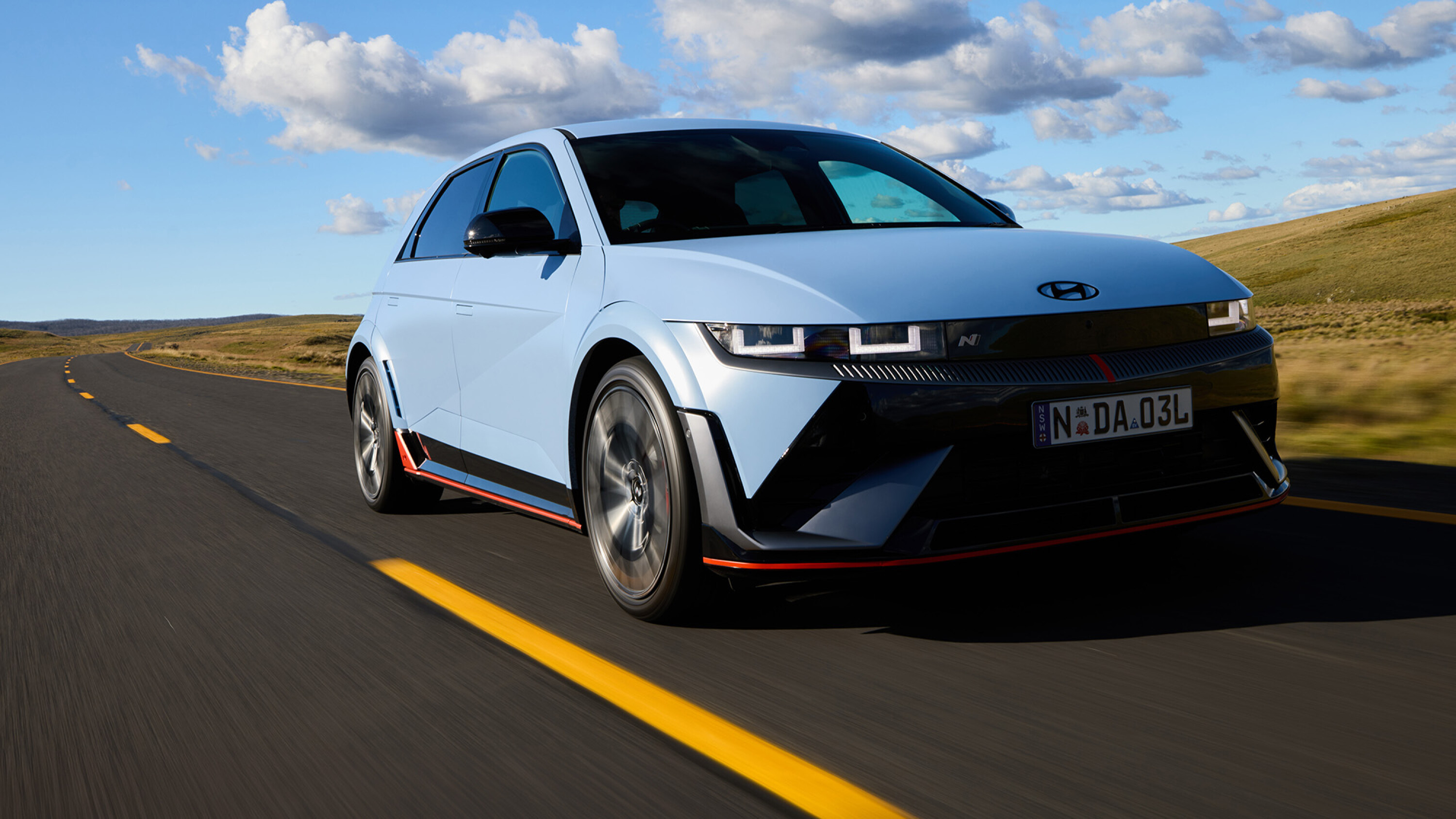Three words came to embody the development program for the Hyundai Ioniq 5 N, forming a mantra that latterly informed every engineering and calibration decision.
They were originally appended to the end of an email in an exchange between Albert Biermann and a group of engineers, one of whom was becoming frustrated that the project was in danger of drifting from its original goals.
These three words created a sudden and focused course correction.
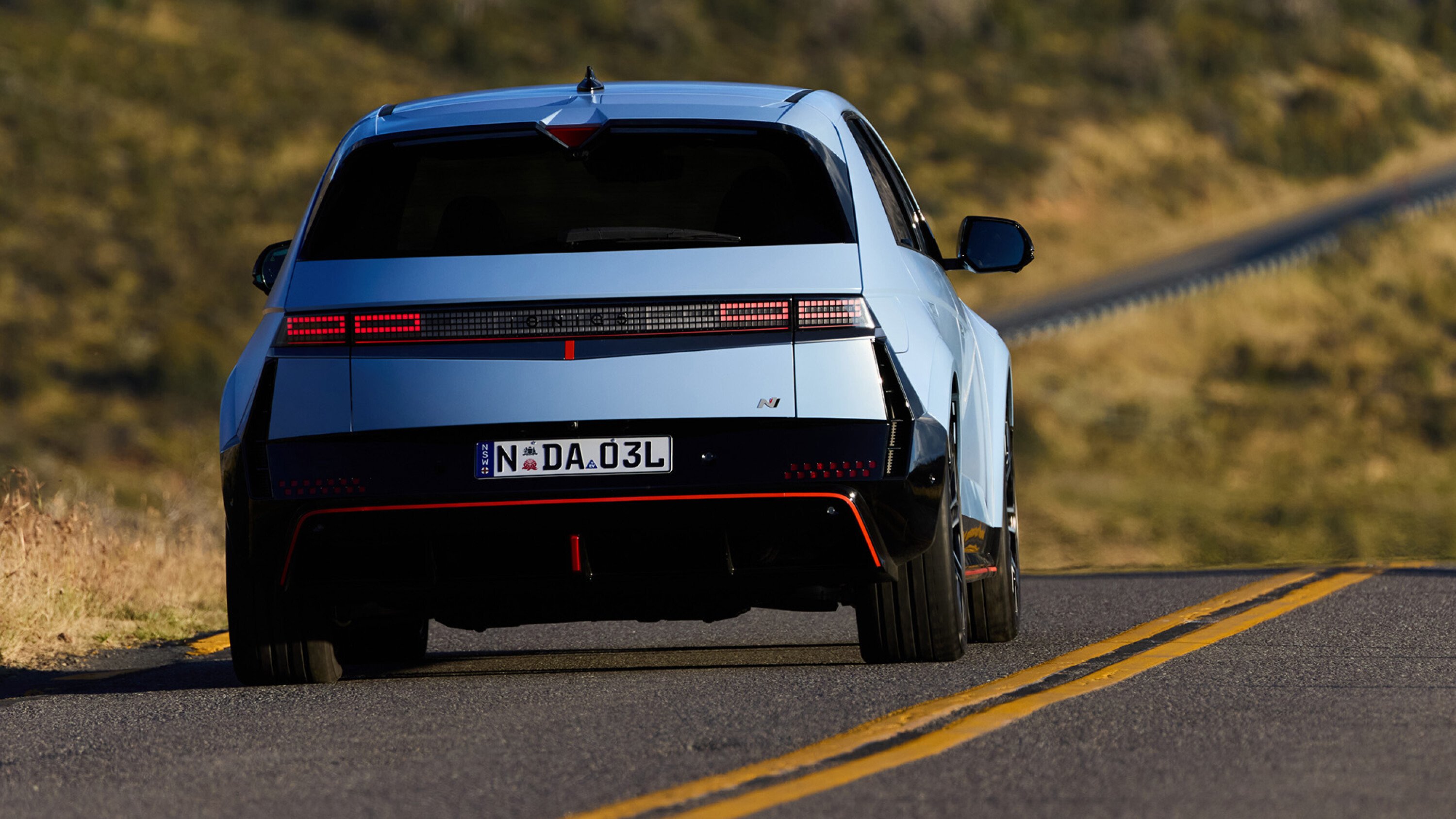
“Driving still matters.”
Biermann’s title today reads Executive Technical Advisor.
You may well have heard some reports that have suggested the German has taken a bit of a back seat with regards to vehicle development at Hyundai, but it’s clear that he’s still deeply involved, more recently with the scope of an even bigger challenge than Ioniq 5 N; an affordable electrified small N car.
He’s in an expansive mood today, dialling in from his home in Munich, keen to talk about the genesis of a sports car that’s quite unlike anything else in the market. He’s under no illusions as to the scale and importance of the initial task.
“For me, Ioniq 5 N was, after i30 N, the most important N car,” he explains. “It was a journey into a whole new era digging really deep into all the challenges and coming from electric powertrain and electric vehicle technology and transforming this into driving fun in a Hyundai N car so also my learnings were really a lot and setting the right challenges. So where should we be?”
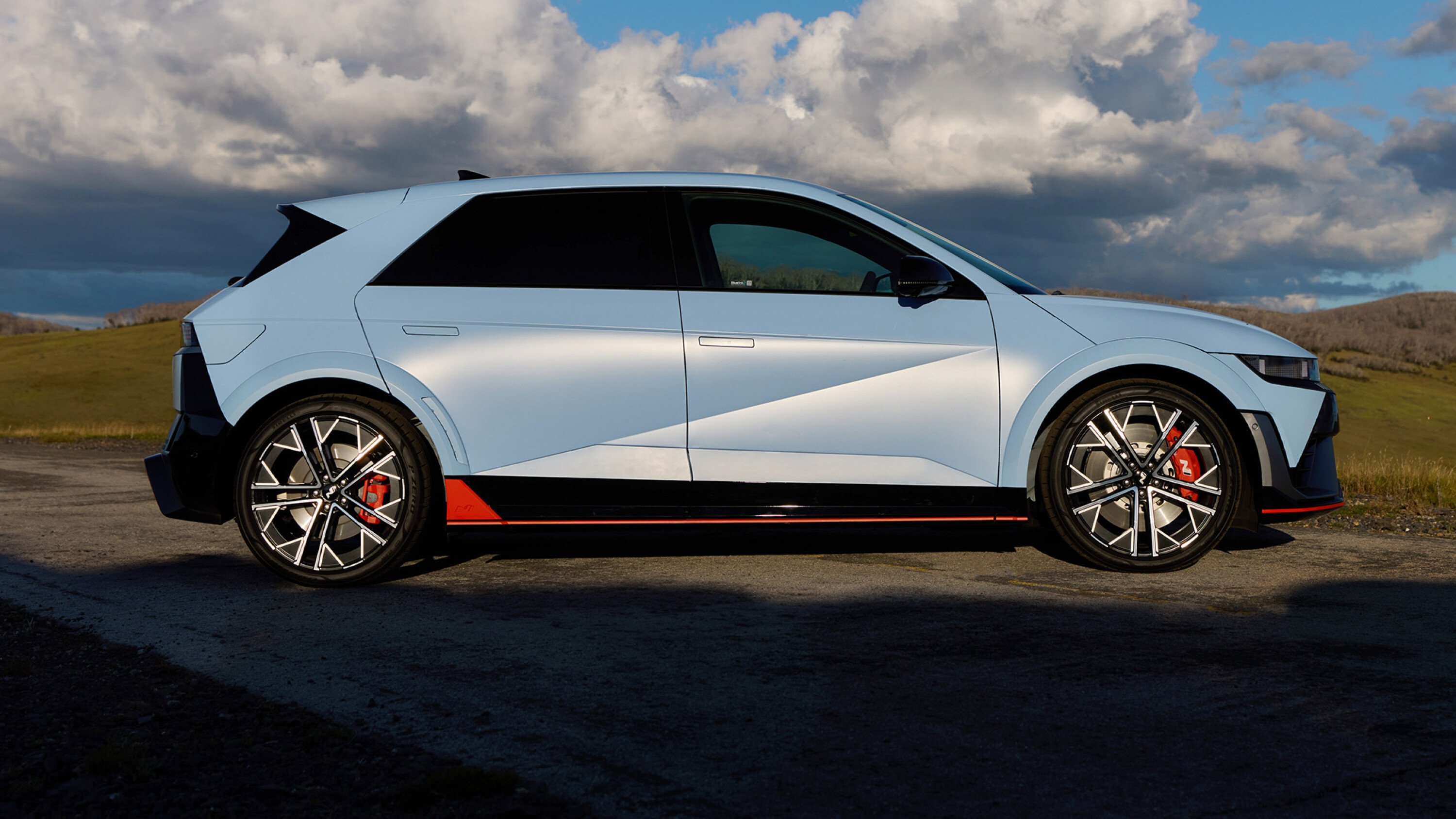
It’s a good question. In effect, the engineering team at Namyang had nothing to benchmark from.
“I remember, almost seven years ago, we built in Ioniq EV concept where we started creating sound, added some vibrations and we played around with that car for quite some time, but my conclusion was [that] this is nice, but this is not enough to make an EV an exciting driving experience.
“For whatever reason I asked this weird question, ‘Why don’t we pretend shifting?’ and they looked at me like I was a little crazy, but I said ‘Yeah, we have only one gear but we can pretend shifting’ and so we started working on this in a pretty relaxed way. There was no Hyundai N car in sight, we had no idea when the first [electric] Hyundai N car would come, but to me it was clear the day would come when we will have to deliver a fun machine to our customers.”
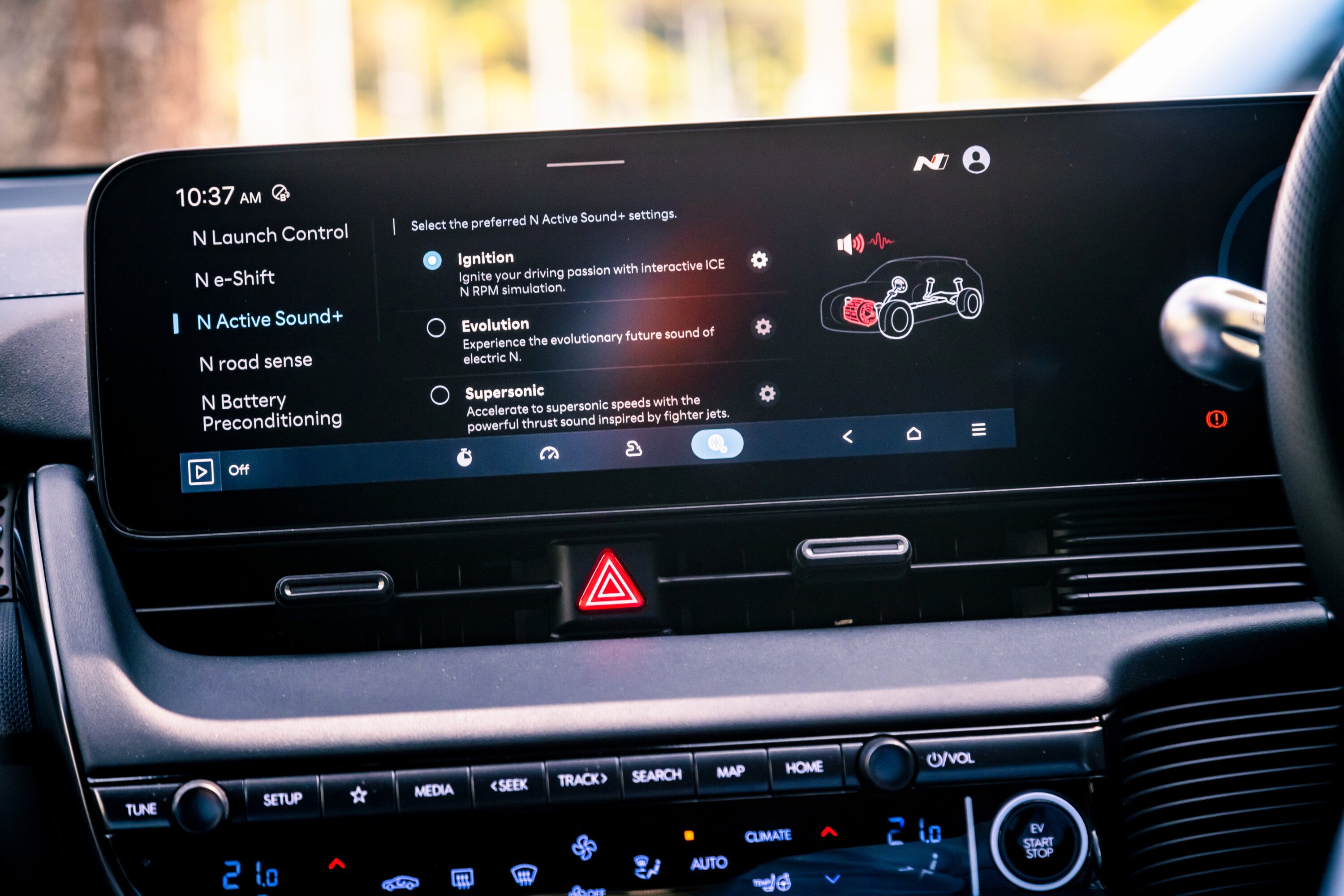
I’m intrigued about this decision. To introduce something so brazenly inauthentic at such an early stage of the development cycle requires a huge measure of self confidence.
Annoyingly, it works. Driving the 5 N in this mode on a twisty road, tapping downshifts into corners and hearing it crack and pop on the overrun is undeniably good sport. I grudgingly admit this to him.
“Welcome to the club,” Biermann laughs. “There’s already an endless number of people who had the same anticipation to this functionality as you describe and I don’t know any person who had these concerns after driving the Ioniq 5 N. Everybody after driving it says’ I couldn’t believe it’s so damn good’ to be honest.
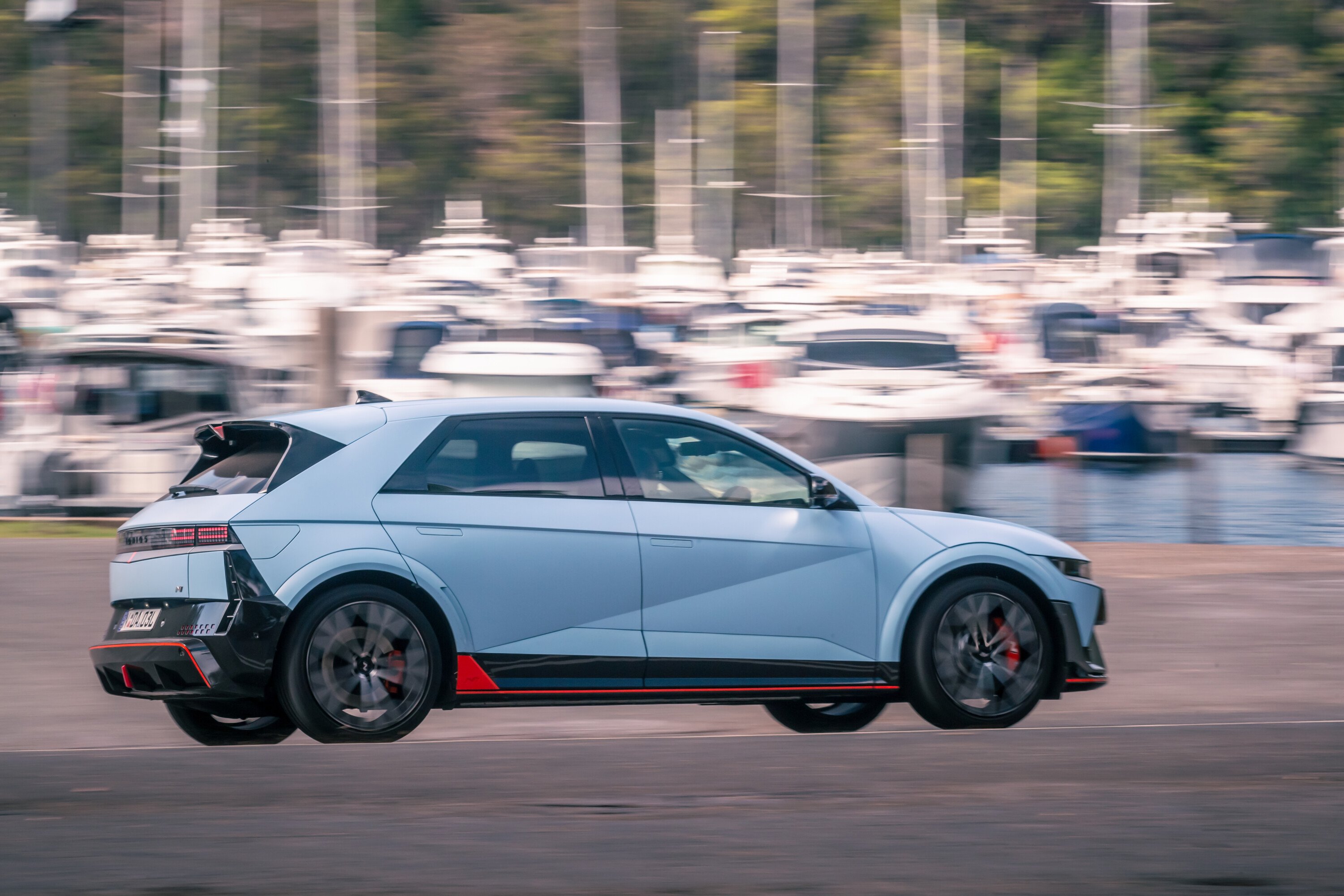
It’s clear that ICE proponents will likely seize on the idea of synthesised manual shifts and suggest that the only way to get an EV to be involving is to fake the responses of an engine and gearbox, that this is somehow a retrograde step that proves that EVs are inherently dull to drive.
I can see that line of logic, but it’s worth being open minded. We’re in a transitional phase in EV sports car development. Biermann is undeniably candid when pushed on how he came up with the solution.
“I had no better idea than going for this,” he chuckles. “I remember that day at Namyang when we had this test session with the Ioniq EV and we fooled around with it already for a year or so, but it was never good enough.
“We are all kind of weird sounds and vibrating seats and vibrating everything right it didn’t bring the fun part that I was still missing a lot of fun and just to discuss with the engineers all of a sudden gave me this weird question why don’t we shift? I don’t know why this came up and I think some thought probably really stupid or crazy enough right. Maybe it was not the only moment they thought that.”
The development of this system too significantly longer than expected. It’s more than just an audio synthesizer.
The car needs to decelerate on downshifts and pull up into a torque band as you run up through the gears and for the longest time, it wasn’t right. Not to Biermann’s satisfaction at least.
The eureka moment came when they recruited the engineer with overall responsibility for dual-clutch transmission to the Ioniq 5 N program.

“I think those were for me the kind of biggest challenges, but also the fun part because when when the day comes and there are sound engineers with you in the car, maybe for the tenth time coming out.”
“[In the i30 N’s DCT] we have the almost best benchmark in our own portfolio and let’s just take that benchmark as the target to bring this emotional driving experience to our customers. In the end it It was the right way to go and to meet this kind of emotional involvement.
“Also then the authentic feedback so that you can feel at home easily that you get all the support from the vehicle when it comes to the way the car changes the torque, you can work with the car is downshifts, drag torque and the emotional feedback, the sound feedback that you can easily get an idea similar to the ICE car how to manage track driving or sporty country road drive.
I think those were for me the kind of biggest challenges, but also the fun part because when when the day comes and there are sound engineers with you in the car, maybe for the tenth time coming out. He says ‘I have something new. It’s really better.’ And then he says ‘You know, I have another one but it’s almost too crazy.
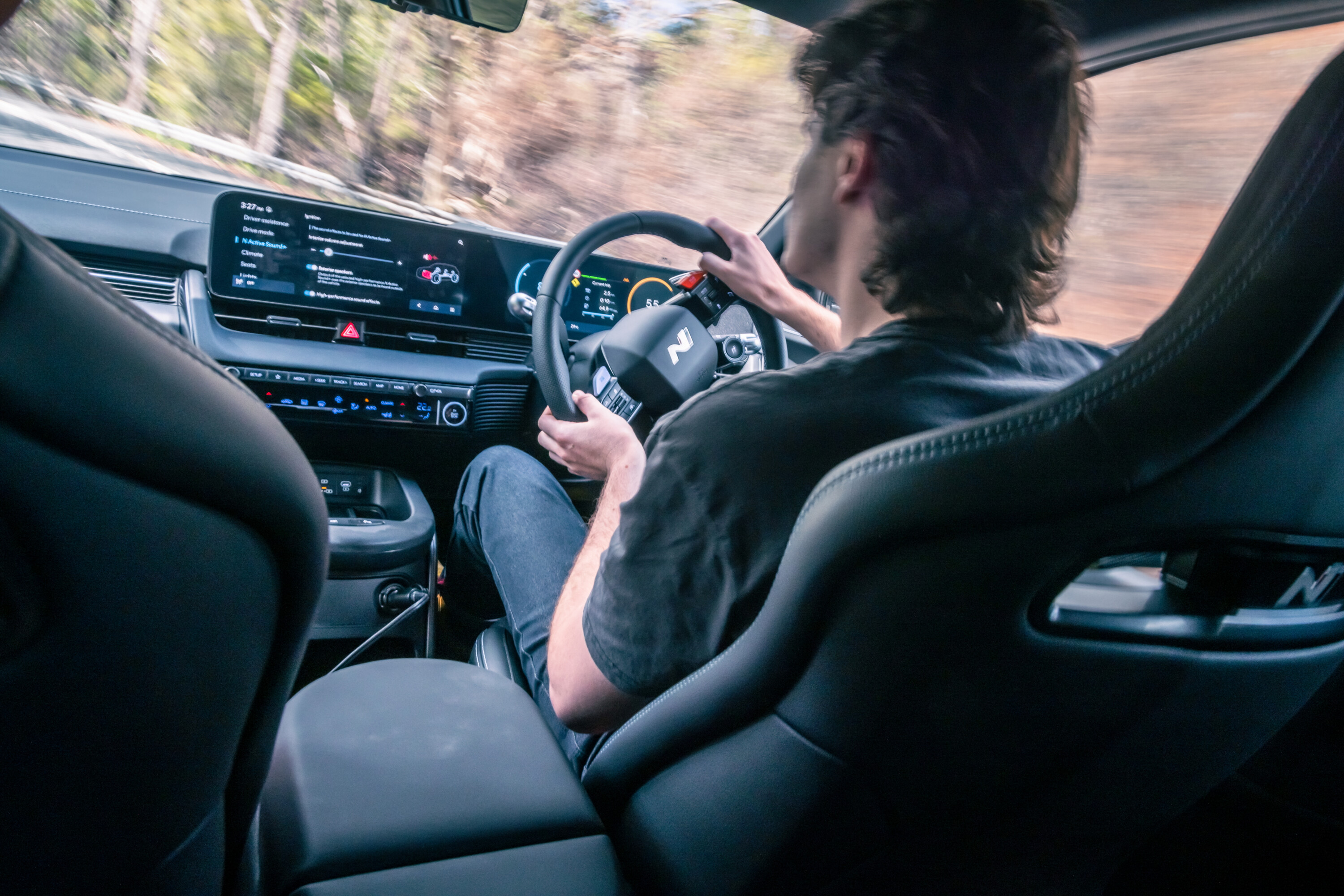
“I don’t know if I can show this to you.’ I say ‘Come on come on, give it to me.’ So he puts it on and I said “THAT’S IT! This is what I’m waiting for for such a long time” right so then this moment when you’re really think ‘Okay now. Now we are on the spot.”
“But yeah to bring this into a new world for us: all-wheel drive, a first time for N. A vehicle weight of 2.2 tonnes, we had never been in that range before but the biggest challenge was the three pillars for N everyday sports car, corner rascal and then the racetrack capability. In the early stages of the project of course the were discussions and some people say ‘No, we don’t need a racetrack capability for an EV. No EV has a racetrack capability’.
“Sometimes it took me some increasing the volume of my voice to make clear there can be no doubt what an N car is and it doesn’t matter if it’s combustion or EV or hydrogen an N car is an N car and racetrack capability is the core element of an N car and we cannot play around with this.
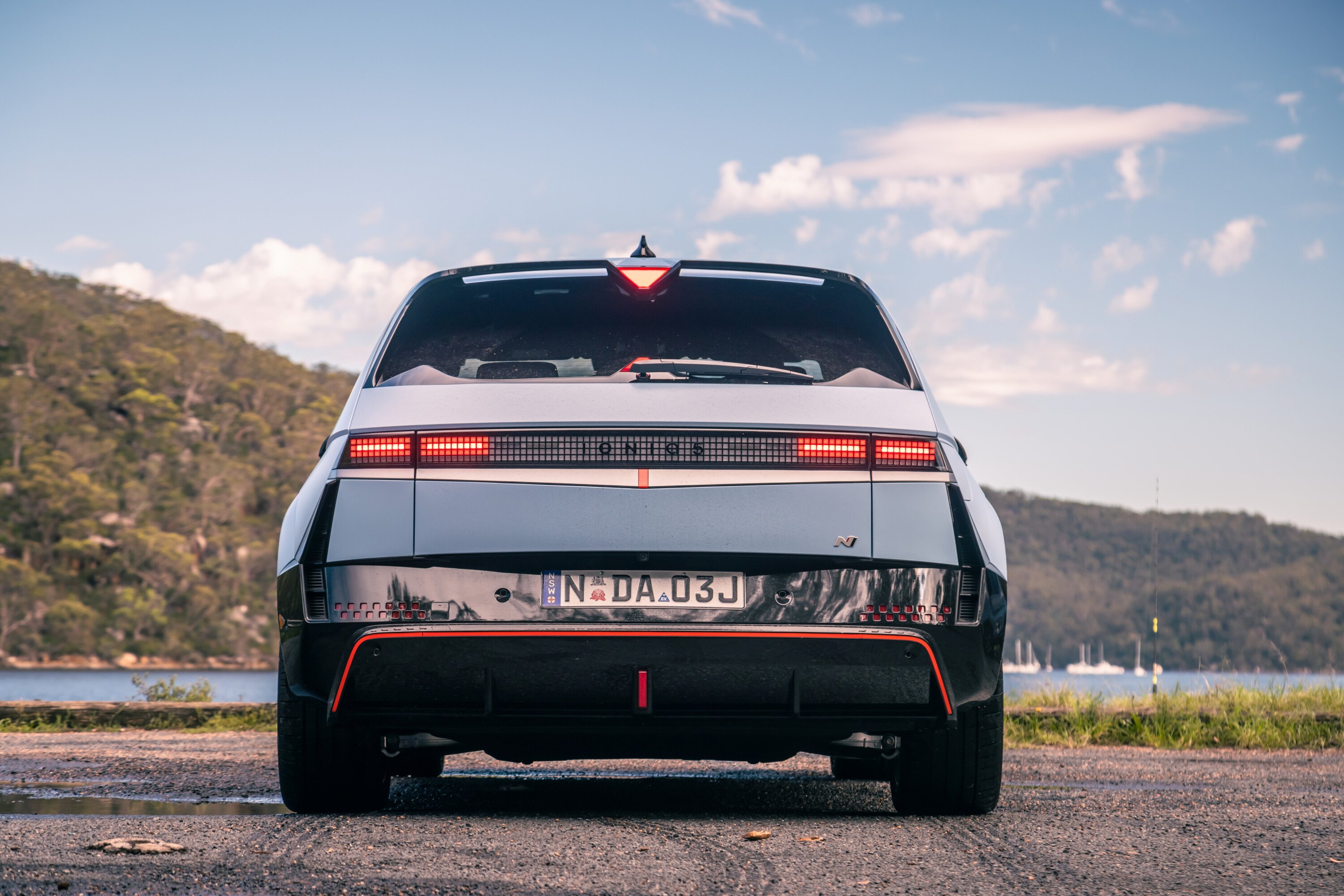
“We have to make this EV the first N EV capable of driving tracks and not just maybe for a few minutes and then we get a horrible rating like several of the existing EVs that are out there and you’ve probably experienced several times.”
Biermann explains how the car had undergone 10,000km of testing on the Nürburgring Nordschleife and, after some refinement, it had hit the target eight-minute lap. He believed it was capable of more.
“So I came up with another target. The eight minutes that can be done even on the Nürburgring are the toughest maybe on this planet because you have this two very long straights right after Bergwerk when you go Kesselchen up to Karussell, it’s a long, long uphill section that really drains the battery like hell and then you have Döttinger Höhe, a very long high speed straight. I would think if we could do two laps, this is like 16 minutes best pace then we can do maybe do almost 20 minutes on normal racetracks.
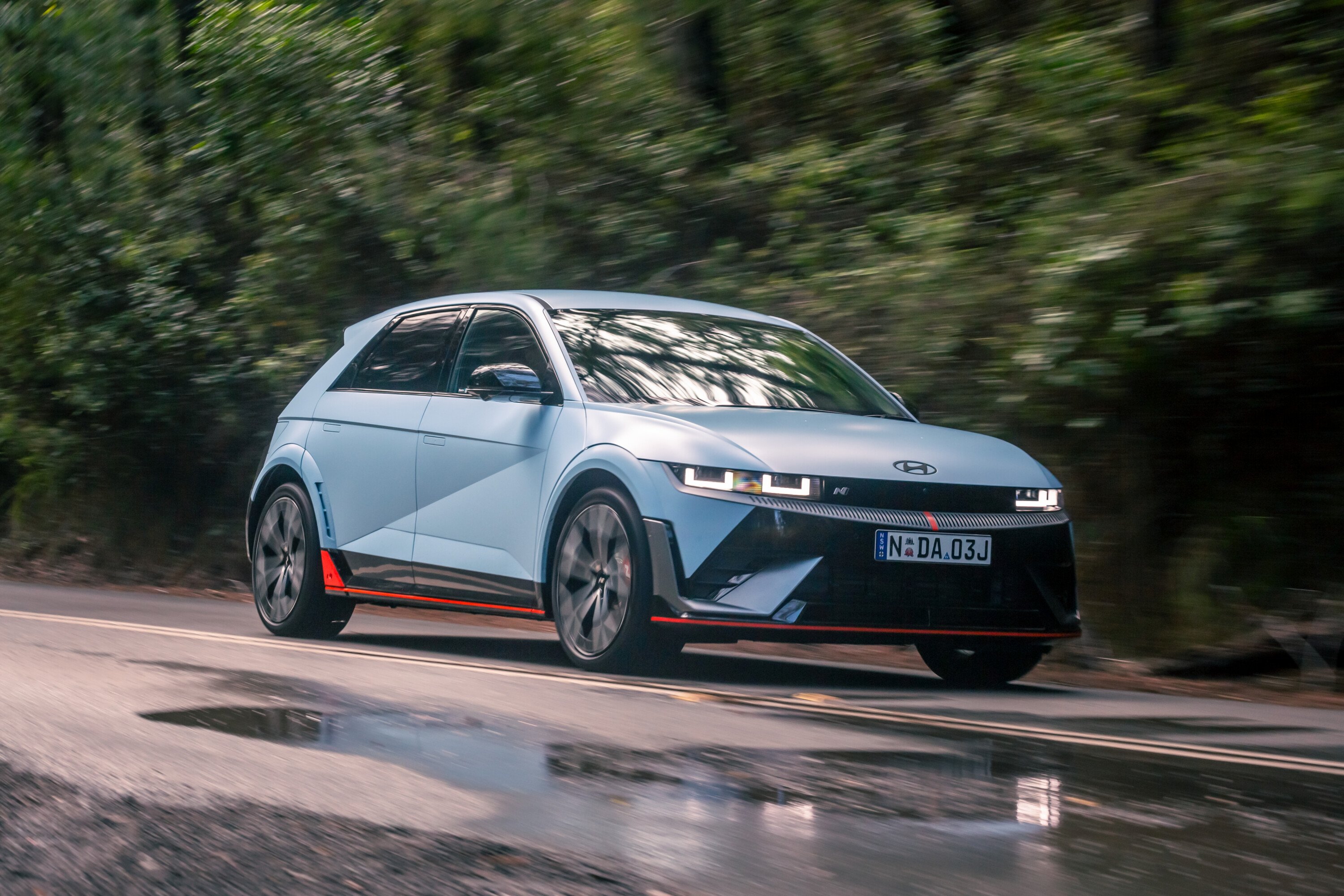
“I came up with yet another target, 20/20/20, which sounds a bit weird but it’s easy to understand. 20/20/20 means 20 minute track time and after there 20 minutes supercharging and then you go back out for 20 minutes track driving.
It’s clear that unravelling the capabilities of EV platforms is something that Biermann clearly enjoys. But he’s keen to bring everybody along for that particular ride.
What of the EV naysayers? He smiles. “We were thinking there’s probably more potential in this technology than things that we need to worry about or to be afraid about.” Biermann knows. There are great things coming and, at Namyang at the very least, driving still matters.
We recommend
-
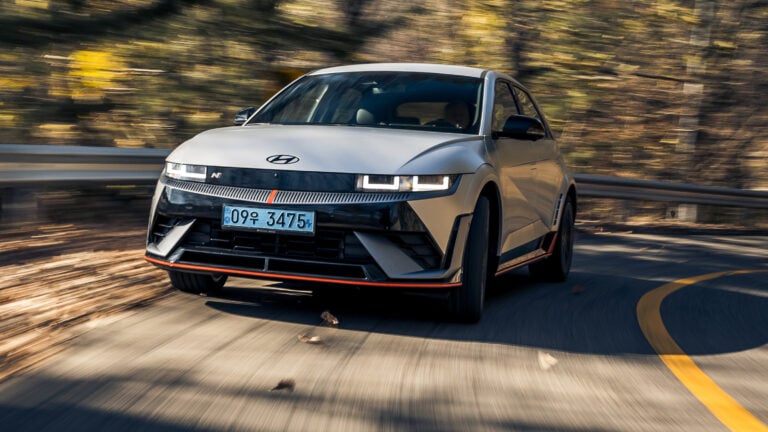 Reviews
Reviews2024 Hyundai IONIQ 5 N review: International first drive
We loved the i30 N hot-hatch but can Hyundai build a genuine electric driver’s car? Start to believe.
-
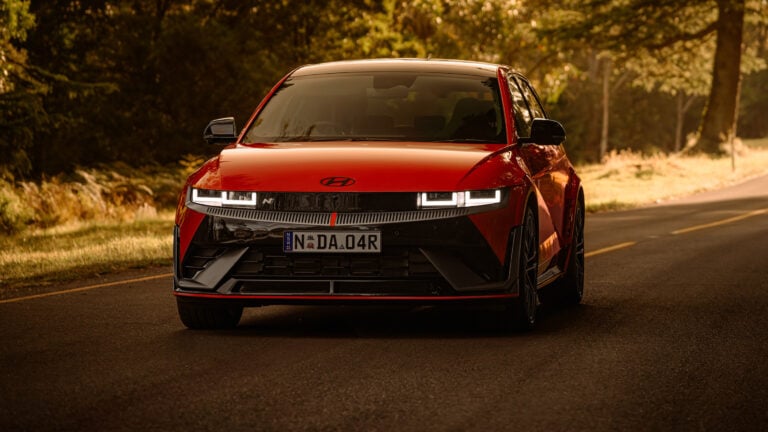 News
News2024 Hyundai Ioniq 5 N pricing: 478kW, $111k hero on sale now
Customers will have 12 hours to snaffle up the first batch of Hyundai’s high-performance EV, with orders opening on September 15
-
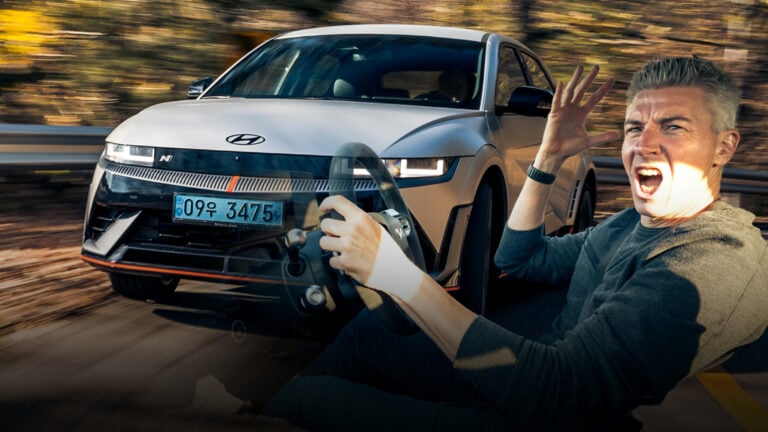 Reviews
ReviewsVIDEO REVIEW: Hyundai IONIQ 5 N driven!
Jez heads to Korea for some hooning in Hyundai's mad new 'hot hatch', the IONIQ 5 N


